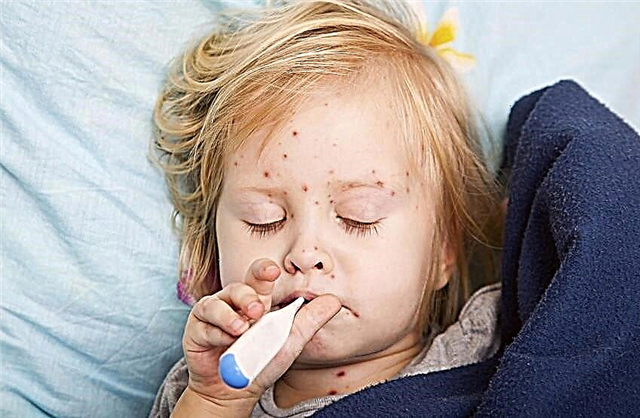With the birth of a child, young parents have many questions, fears and concerns. After all, taking care of a baby is a responsible and difficult job. Moms and dads should know a lot and be able to make their baby grow up healthy and happy. But sometimes the joy of having a child is mixed with a feeling of fear for his life. This especially happens when the pregnancy or childbirth was not proceeding in the best way and the baby was born with pathology.
Small patients have significant trials that sometimes are beyond the power of an adult. The word "sepsis", incomprehensible to parents, mentioned by the doctor, speaks of a serious health problem of the baby. Parents need to be aware of the disease and understand how to prevent it. If the baby has already developed the disease, it is worth navigating the treatment tactics and possible prognosis of the disease.
What is neonatal sepsis?
Neonatal sepsis is a blood infection that occurs during the neonatal period, which leads to damage to all organs and systems of the body. The disease is based on the systemic response of the whole organism to the introduction of bacterial microflora. There is a generalized damage to blood vessels, an increase in their permeability, a violation of microcirculation and a disorder of hemostasis.
Sepsis in newborns is an extremely dangerous disease and, without proper treatment, leads to the death of a child. Before antibiotics were introduced, infants with neonatal sepsis had no chance of survival. Currently, the mortality rate is 30 - 40%.
What causes sepsis?
The most common reason for the development of sepsis is the introduction of bacterial microflora into the baby's body. The causative agents of sepsis are various pathogenic microorganisms, opportunistic bacteria, staphylococci, streptococci. But the development of the disease is not excluded when infected with Pseudomonas aeruginosa and Escherichia coli, Klebsiella, pneumococci. In some cases, more than one pathogen is released, a mixed infection associated with a fungal occurs.
The entrance gates through which microorganisms enter the blood are most often the skin, the umbilical wound, the child's respiratory system, and the gastrointestinal tract. The penetration of the pathogen is possible through the oral and nasal cavity, the mucous membrane of the eyes, the genitourinary tract.

The occurrence of sepsis is explained not only by the pathogenicity of the microorganism, but also by the state of the child's immunity. The weakness of the immune system lies in the inability to cope with bacteria or localize, limit the inflammatory focus. As a result, microorganisms enter the bloodstream and spread throughout the child's body.
It turns out that some factors predispose to the development of common infectious processes, knowing which you can suspect in time and prevent the development of the disease.
Factors predisposing to the development of sepsis in newborns
- infections in the mother.
Urogenital diseases in a woman during pregnancy and during childbirth, vaginitis, endometritis, chorioamnionitis - can cause bacterial sepsis in newborns. An unfavorable factor is the detection of group B streptococcus in the birth canal of a woman in labor. An anhydrous period lasting more than 12 hours is dangerous for the health of the baby;
- unfavorable history.
Women with multiple abortions and miscarriages, pregnancy pathology, gestosis, lasting more than 4 weeks, are at risk for the development of pathologies in the baby. Much attention is paid to a woman whose previous pregnancy ended in the death of a child. Children born to such mothers require additional examination and careful observation;
- diseases of the newborn.
Among newborns, premature babies require special attention, especially those with low and very low birth weights. The incidence of sepsis in this group reaches 1%, compared with 0.1% in full-term infants.
Children born in asphyxia, who could not take the first breath immediately after birth, but required resuscitation, are also at risk. An enteral pause is especially dangerous when, due to the severity of the condition, the baby was contraindicated in feeding.
Children with congenital malformations, defects in the immune system, lung diseases, intrauterine infections require close supervision and proper care;

- interference.
Any surgical interventions, artificial ventilation of the lungs, catheterization of the umbilical and central veins reduce the protective function of natural barriers and injure tissues. Massive courses of antibiotic therapy in newborns are also adversely affected, without taking into account the sensitivity of bacteria.
What is neonatal sepsis?
When making a diagnosis, the doctor must specify which clinical variant of the disease is present in the child.
Depending on the time of development of the disease, the following forms are distinguished:
- early neonatal sepsis.
Symptoms of infection with this type of sepsis appear in the first 6 days of a child's life. Such an early development of the disease indicates an infection of the crumbs during pregnancy or during childbirth. A distinctive feature of the disease is the absence of a primary purulent-inflammatory focus, the entrance gate of infection;
- late neonatal sepsis.
Symptoms of the disease appear later, starting from the 7th day after the birth of the child. The most common cause of late sepsis is infection of the baby after birth. A primary focus of inflammation is found, which leads to the entry of the pathogen into the baby's blood.
According to the location of the primary purulent-inflammatory focus, the following types are distinguished:
- umbilical sepsis of newborns, arising from defects in the care of the umbilical wound, prolonged catheterization of the umbilical vein;
- pulmonary sepsis, which occurs when lung tissue disease, as well as during artificial ventilation of the respiratory organs;
- otogenic, the entrance gate at which is the ear cavity;
- rhinopharyngeal and rhinoconjunctival - the primary gate of infection is located on the mucous membrane of the nose, throat, eyes;
- urogenic and abdominal - the infection has penetrated the genitourinary system or the digestive system;
- catheterization.

Clinical forms of neonatal sepsis
- septicemia.
This form is more typical for early neonatal sepsis and is manifested by the presence of the pathogen in the child's blood, the severe condition of the baby, and pronounced symptoms of intoxication. The peculiarity of septicemia is the defeat of internal organs without the formation of purulent foci;
- septicopyemia.
With the development of septicopyemia, the pathogen penetrates into various organs and forms purulent foci in them. This form of the disease is more common with late sepsis, which arose no earlier than 7 days of the baby's life.
Sepsis also differs depending on the course of the disease:
- with a fulminant form, the disease can proceed quickly, the condition of the baby in this case worsens before our eyes. The duration of the disease does not exceed a week, during which the microorganism manages to penetrate into all organs and systems;
- acute sepsis lasts from 1 to 2 months, subacute - up to 3 months, and protracted sepsis lasts more than 3 months. It is possible to develop a chronic course of the disease lasting up to a year and a recurrent variant with alternating periods of improvement and deterioration of the baby's condition.
Although the manifestations of sepsis differ depending on the form and course of the disease, in any case there are general clinical manifestations, characteristic symptoms of sepsis.
Signs of sepsis in newborns
- the severity of the condition.
Regardless of the form of the disease, sepsis is a very serious disease in which a significant deterioration in the baby's condition occurs. The child becomes lethargic, a decrease in appetite is noticeable. The kid stops gaining weight, hypotrophy develops, facial features sharpen;
- change in body temperature.
In full-term babies, the body temperature rises, reaching febrile numbers, more than 38 ° C.
A feature of premature babies is the weakness of the immune response, the temperature with sepsis in premature babies, in contrast to mature babies, decreases. Hypothermia does not exceed 36 ° C, it becomes difficult to warm the child;
- discoloration of the skin.
The development of sepsis is indicated by a change in skin color - the appearance of a dirty gray or pale skin tone. Often this color is combined with yellowness and signs of circulatory disorders. Attention is drawn to hemorrhages (hemorrhages), marbling and impaired blood circulation, bluish tint of the hands and feet. General swelling and bleeding tendency often occurs;

- the development of respiratory and cardiovascular failure.
Shortness of breath appears, the frequency of respiratory movements exceeds 60 per minute. From the side of the heart, both tachycardia, more than 160 beats per minute, and bradycardia - up to 110 heartbeats can be noted;
- dysfunction of the gastrointestinal tract.
Regurgitation and vomiting appear, the child ceases to absorb food. On examination, attention is drawn to an enlarged and distended abdomen with a venous network on the anterior abdominal wall. The liver and spleen increase in size;
- damage to the urinary system.
The child becomes edematous and the kidneys are not producing enough urine. In severe condition, urine is completely absent (anuria);
- disorder of the nervous system.
There is a depression of the nervous system, a decrease or absence of reflexes in newborns. The kid becomes lethargic and practically does not react to others. Sometimes the opposite occurs, increased excitability, irritability of the crumbs. The condition may worsen and lead to seizures.
Diagnosis of sepsis
To correctly establish a diagnosis, you need to adhere to a certain algorithm, assume the presence of a disease, identify the pathogen and assess the degree of damage to internal organs.
Due to the absence of a primary infectious focus in newborns, the first manifestations of sepsis can be easily confused with other common diseases. Respiratory disorders, lesions of the gastrointestinal tract often "mask" sepsis.
To identify early sepsis in the first 6 days of a baby's life, you should pay attention to the likely symptoms:

- serious condition of the crumbs, severe intoxication;
- body temperature more than 37.5 ° C or less than 36.2 ° C for three days;
- changes in the clinical analysis of blood - an increase in the number of leukocytes and a decrease in the level of platelets;
- high levels of C-reactive protein;
- an increase in the amount of procalcitonin and IL-8 in the blood serum.
If signs of sepsis arose after the 6th day of the baby's life, then for the diagnosis it is necessary to identify the primary inflammatory focus and changes in laboratory blood parameters.
For further diagnosis and determination of the most effective treatment, carry out:
- a blood test for sterility.
Although the detection of bacteria in the blood can be found in various infectious diseases, this analysis helps to choose the best treatment, choose the most effective drugs, antibiotics;
- microbiological research.
To identify the causative agent of the infection, the discharge from the purulent-inflammatory focus is examined. Possible microbiological research, sowing on a nutrient medium and other material - pus, cerebrospinal fluid, urine (depending on the affected organ);

- laboratory and instrumental examination methods.
Other studies are used to determine the degree of functional and structural damage to all vital organs.
Treatment of sepsis in newborns
Sepsis is a serious, dangerous disease that, without proper treatment, leads to failure of vital organs and death.
It is necessary to start therapeutic measures at the first suspicion of an infectious process, without waiting for the results of crops. It will take several days to accurately determine the pathogen, which can be decisive in the child's condition.
Areas of therapy for sepsis
- Antibiotic therapy.
Even before the results of the cultures are obtained and the exact determination of the pathogen is usually prescribed, 2 strong antibiotics are prescribed. Medicines are given intravenously to maximize their effectiveness. Correction of antibiotic therapy is carried out after receiving the test results, isolating the pathogen.
- Intensive therapy.
Depending on the severity of the crumbs' condition, the baby may need respiratory support, blood pressure correction, infusion therapy, and intravenous medication. In severe cases, the use of hormonal drugs, blood transfusion and fresh frozen plasma is not excluded.
- Correction of immunity.
To increase the body's defenses, create immunity against bacteria, immunoglobulins are used, for example, pentaglobin, interferons. Medicines enhance anti-infectious protection, activate immunity, reduce the effects of intoxication.
- Elimination of the focus of infection.
Most often, the primary focus of infection is the umbilical wound, improper care of which leads to infection and the spread of infection. With umbilical sepsis, omphalitis (inflammation of the umbilical wound) is treated, discharge and suppuration from the umbilical wound are removed. The nurse provides daily hygienic care and round-the-clock monitoring of the patient.
- Symptomatic therapy.
Symptomatic treatment includes correction of anemia, restoration of normal intestinal microflora, antifungal and other types of therapy.
- Recovery activities.
A baby with sepsis will have a long rehabilitation period. Often, babies are shown massage, gymnastic exercises, physiotherapy procedures. Often, the crumb remains on the dispensary with several specialists up to 3 years of age.

Prevention of neonatal sepsis
The prevention of the disease largely depends on the consciousness of the expectant mother. Even during pregnancy planning, a couple should visit specialists, thoroughly examine and get rid of chronic inflammatory processes.
It is worth giving up bad habits during pregnancy planning and carrying a child, which will increase the resistance of the woman's body and protect the baby from the development of pathologies.
During pregnancy, the expectant mother should regularly visit the gynecologist and follow all the instructions. If, nevertheless, an infection has occurred, it is important to identify and cure the disease in time, to prevent the spread and chronicity of the process.
To avoid generalization of infection, the medical staff must carefully monitor the cleanliness of the delivery rooms, disinfection of instruments and premises. All employees undergo regular medical examinations and checks for infection carriers.
It is imperative to comply with the rules of caring for a newborn child, teaching mothers. When discharged from the maternity hospital, the mother should know everything about the hygiene of the child and be able to take care of the newborn.

Conclusion
Neonatal sepsis is a serious and dangerous disease of newborns.The treatment of this ailment requires a lot of strength and patience. Unfortunately, the disease is fatal in 40% of cases, since it quickly affects many organs. But with timely assistance and careful care, a complete cure is possible.
It is important for parents to know the simple rules for the prevention of infectious diseases, visit a doctor on time and monitor their health and well-being of the baby. It is necessary to take care of the health of the child from the moment of planning a pregnancy, it is necessary to be attentive to medical recommendations. Thus, the expectant mother will be able to protect the baby from serious problems.



